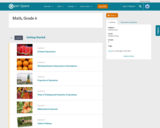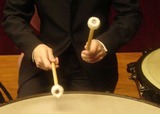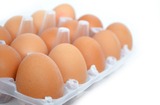
5 Results


Rate
Type of Unit: Concept
Prior Knowledge
Students should be able to:
Solve problems involving all four operations with rational numbers.
Understand quantity as a number used with a unit of measurement.
Solve problems involving quantities such as distances, intervals of time, liquid volumes, masses of objects, and money, and with the units of measurement for these quantities.
Understand that a ratio is a comparison of two quantities.
Write ratios for problem situations.
Make and interpret tables, graphs, and diagrams.
Write and solve equations to represent problem situations.
Lesson Flow
In this unit, students will explore the concept of rate in a variety of contexts: beats per minute, unit prices, fuel efficiency of a car, population density, speed, and conversion factors. Students will write and refine their own definition for rate and then use it to recognize rates in different situations. Students will learn that every rate is paired with an inverse rate that is a measure of the same relationship. Students will figure out the logic of how units are used with rates. Then students will represent quantitative relationships involving rates, using tables, graphs, double number lines, and formulas, and they will see how to create one such representation when given another.
- Subject:
- Algebra
- Mathematics
- Provider:
- Pearson

In this lesson, students are introduced to rate in the context of music. They will explore beats per minute and compare rates using mathematical representations including graphs and double number lines.Key ConceptsBeats per minute is a rate. Musicians often count the number of beats per measure to determine the tempo of a song. A fast tempo produces music that seems to be racing, whereas a slow tempo results in music that is more relaxing. When graphed, sets with more beats per minute have smaller intervals on the double number line and steeper lines on the graph.Goals and Learning ObjectivesInvestigate rate in music.Find beats per minute by counting beats in music.Represent beats per minute on a double number line and a graph.
- Material Type:
- Lesson Plan
- Author:
- Chris Adcock
- Date Added:
- 02/28/2022

In this lesson, students explore rate in the context of grocery shopping. Students use the unit price, or price per egg, to find the price of any number of eggs.Key ConceptsA unit price is a rate. The unit price tells the price of one unit of something (for example, one pound of cheese, one quart of milk, one box of paper clips, one package of cereal, and so on).The unit price can be found by dividing the price in dollars by the number of units.The unit price can be used to find the price of any quantity of something by multiplying the unit price by the quantity.Goals and Learning ObjectivesInvestigate rate as a unit price.Find a unit price by dividing the price in dollars by the number of units.Find the price of any quantity of something by multiplying that quantity by the unit price.
- Material Type:
- Lesson Plan
- Author:
- Chris Adcock
- Date Added:
- 02/28/2022

Original document, 1942. Roosevelt places in effect emergency orders to control prices, inflation and domestic economics during war time.
- Subject:
- Social Studies
- Material Type:
- Primary Source
- Provider:
- ibiblio
- Date Added:
- 08/07/2023